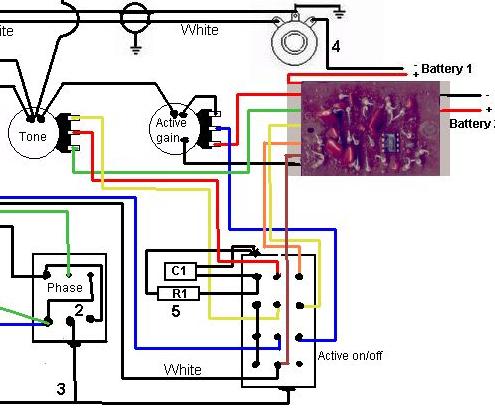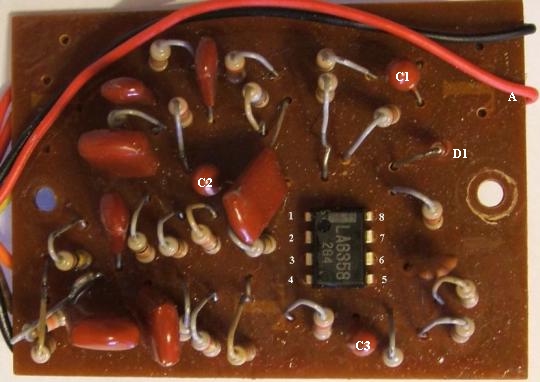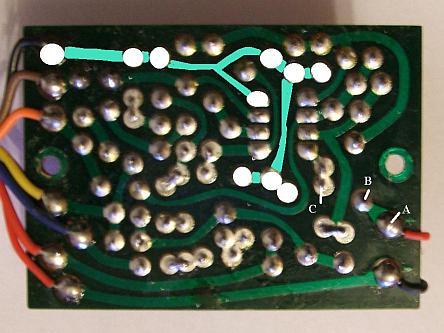
Testing
the active on/off switch - with the active on/off switch in the on
position, oriented as shown above, check the resistance between each
terminal in the vertical centre column and the terminal to the right of
it, there should be zero resistance between them -
On the top row, the red wire from the tone control should connect to the orange wire to the PCB
On the second row, the orange or yellow wire from the tone control should connect to the yellow wire to the PCB
On the third row the blue wire from the volume control should connect to the blue wire to the PCB
If
any of those connections does not show zero resistance the switch is
either dirty (Try switch cleaner) or faulty and should be replaced.




